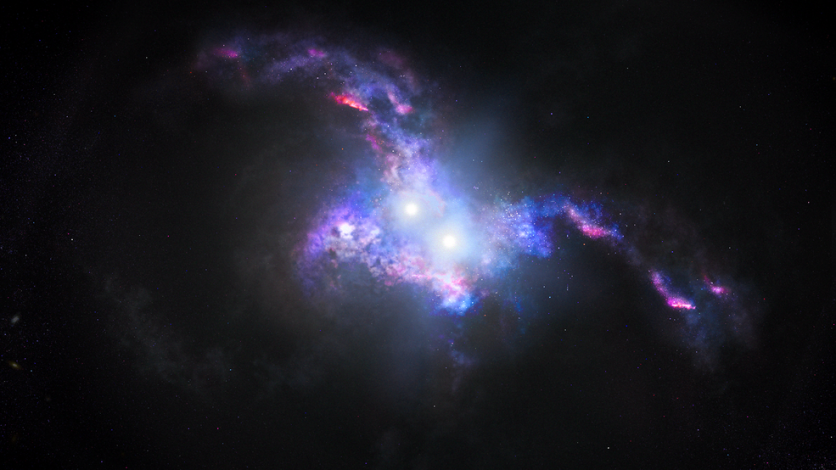NASA has discovered "Twin Quasars" from two ancient galaxies using the Hubble Space Telescope, which has released its initial findings in collaboration with the European Space Agency (ESA). These double quasars are extremely rare to come by but have been visible as NASA's Hubble has performed deep field imaging on a distant part of the universe.
NASA Hubble Discovers Twin Quasars

According to NASA, the quasar would mistakenly look like a single object in space if it was viewed on a normal, ground-based telescope which could have missed the opportunity to discover the cosmic phenomenon. The space agency thanks the technology provided by the Hubble Space Telescope for this discovery, as it played a vital role in imaging it.
Quasars are known to be the "galactic nucleus," which plays a vital role in the presence of a distant galaxy that is millions or billions of light-years away from the home planet. The discovery of the twin quasars is dated back to more than 10 billion years ago, where the universe was only composed of stars and other forms, before the Earth's formation.
Additionally, the team has also found that these quasars are part of the ancient galaxies which have collided with each other, creating the cosmic phenomenon that showed both "light bulb's" presence with extreme radiation qualities. The team in NASA has utilized the Hubble Space Telescope, while ESA's team has utilized ground-based telescopes for the findings.
Quasar Relevance in the Universe
It is a known fact that galaxies make up universes as to what it is now and that millions of these known "regions" in space only contribute to a small percentage of the entirety of all forms out in the cosmos. Having said this, researchers that have studied the twin quasars from NASA and the ESA have published unique findings regarding the twin quasars.
According to the study entitled "A hidden population of high-redshift double quasars unveiled by astrometry" which was recently published last Apr. 1 in Nature Communications, the twin quasars provided a peak in the topic of "supermassive black holes." Lead researcher Yue Shen regarded that this twin quasar is only 1 out of 1,000 quasars in the distant universe.
The findings of these twin quasars are a massive one for the human race, especially as they unlocked a new chapter for the study of the origins of the universe, allowing it to learn and discover more. The relevance of this twin quasar that was captured by Hubble has given an advancement to the possible field of knowledge in quasars, supermassive black holes, and the universe's creation.
This article is owned by Tech Times
Written by Isaiah Alonzo
![Apple Watch Series 10 [GPS 42mm]](https://d.techtimes.com/en/full/453899/apple-watch-series-10-gps-42mm.jpg?w=184&h=103&f=9fb3c2ea2db928c663d1d2eadbcb3e52)



